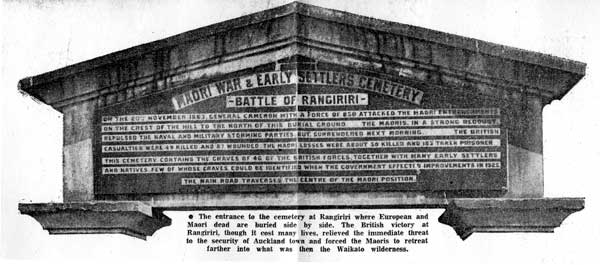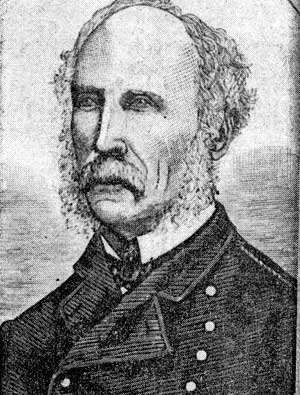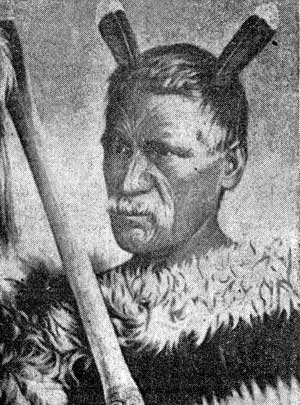
The entrance to the Cemetery at Rangiriri where European and Maori dead are buried side by side. The British victory at Rangiriri although it cost many lives, relieved the immediate threat to the security of Auckland town and forced the Maoris to retreat farther into what was then the Waikato Wilderness.

General Cameron, Commander of the British troops in the Waikato War.

Rewi Maniapoto, the Kingites "lasr stand" leader agains the Imperial troops.
It is difficult to imagine that the green countryside stretching from Auckland to the frings of the King Country was the scene of so much bitter conflict a Century ago.
here and there between Auckland and TeAwamutu there are reminders of the 1864-64 war reminders in the form of monuments, gravestones, military mileposts along the Great South Road, and trenches of Maori and European fortifications.
In Auckland itself
the war bequethed a crop of street names such as Blockhouse Bay Road, Target street and Fort Street.
At Pukekohe East there is a more tangible reminder of the war in the shape of bullet holes in the Presbyterian church. A few miles away at St Brides Church Mauku the 53 rifle slits that were cut into the walls when the Church was a stockade are still there; though
they are now covered with copper strips to prevent weathering of the boards.
Incidents of special note such as the winning of two Victoria Crosses in the Camerontown engagement, have been commemorated by the erection of sighposts which tell the passerby briefly something of the historic significance of particular sites.
At St Johns, Te Awamutu,
Maori and European dead are buried in the same churchyard, with appropiate inscriptions on the monuments.
Inside this church there is a further inscription, in both Maori and English, which was provided by british officers in recognition of the bravery of their Maori
antagonists.
This tribute to the Maori fighters is particulary symbolic since it was made at a time when feeling between Maori and European was at its most bitter state.
With the passing of a Hundred years
the actual incidents of the war tend to fade out of significance. In their place come deeper considerations- an understanding of the causes for which each side fought, the apparant inevitability of war as the outcome of this conflict of ideals, and the resultant peaceab;le occupation by both parties of the land over which they once fought.